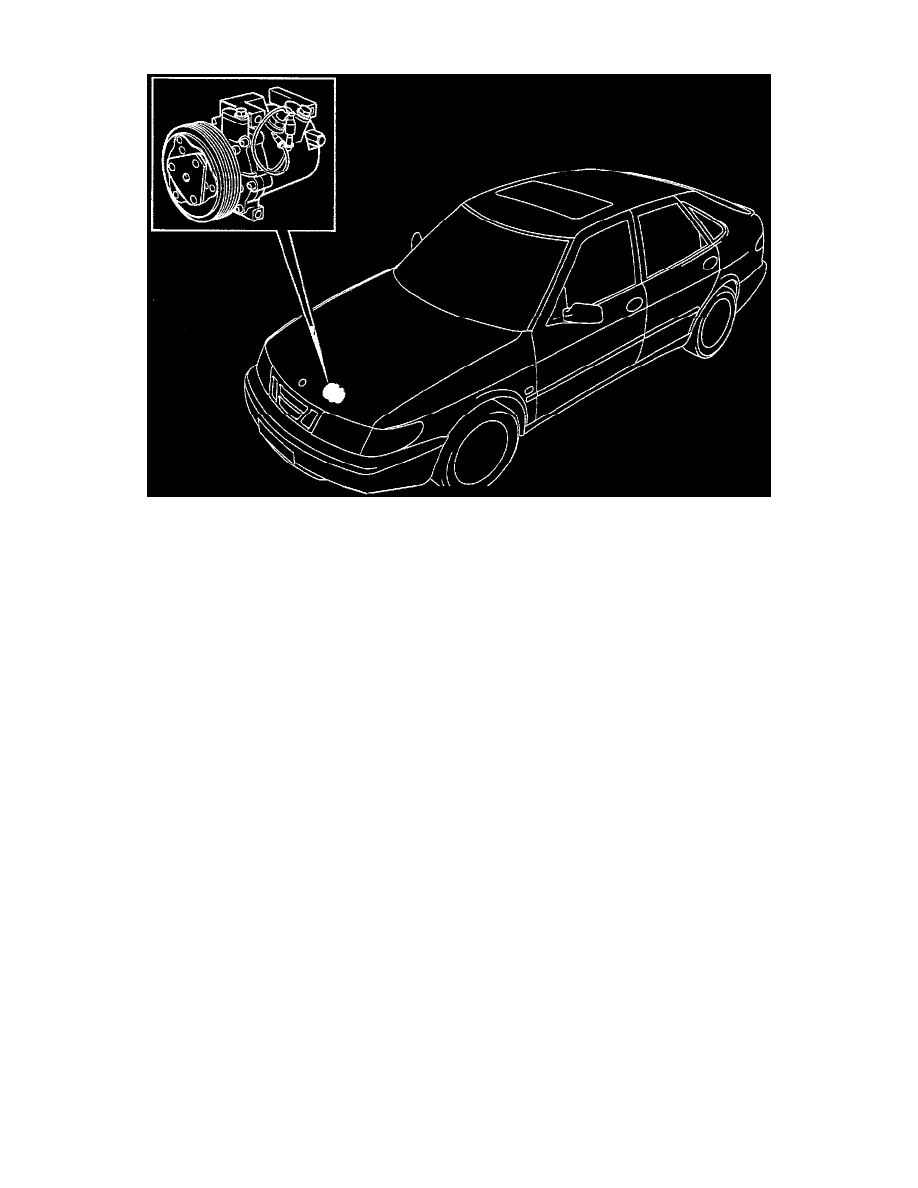900 SE Hatchback L4-1985cc 2.0L DOHC Turbo EFI (1997)

Compressor HVAC: Description and Operation
WARNING:
^
The PAG oil dissolves fat and can irritate the skin. Always use protective gloves when you handle the oil.
^
Filling of refrigerant from a 725 gram refrigerant bottle may only be carried out' via the service connection on the low-pressure side. The
reason for this is that it is necessary to start the engine to be able to fill the system with the correct amount of refrigerant. If the
refrigerant bottle is connected to the high-pressure side when the engine is started, there is a risk that the bottle might explode.
CAUTION: If connections in the A/C system are open, they must be plugged in order to prevent moisture from entering the system. There are specially
made plugs for this which can be ordered.
NOTE: During service on.the A/C system you must take the non-return valve into consideration and ensure that draining and filling of refrigerant are
carried out on both the high-pressure and the low-pressure side simultaneously.
Technical Description
^
The new compressor is fitted with an over-heating cut-out, which disconnects the compressor when the temperature of the compressor body
exceeds +140 °C. The compressor is reconnected when the temperature drops below +120 °C. If the compressor overheats because the amount of
refrigerant in the A/C unit is too small, for instance, or if the expansion valve is clogged up, it will cycle (switch on and off a number of times)
until the temperature falls.
^
The compressor is equipped with a non-return valve, which is fitted in the inlet on the low-pressure side. This non-return valve prevents the
refrigerant from flowing back to the low-pressure side when the compressor stops operating. In this way we have eliminated the risk of noise
which would otherwise occur when the compressor starts working again and liquid refrigerant rushes through the compressor.
